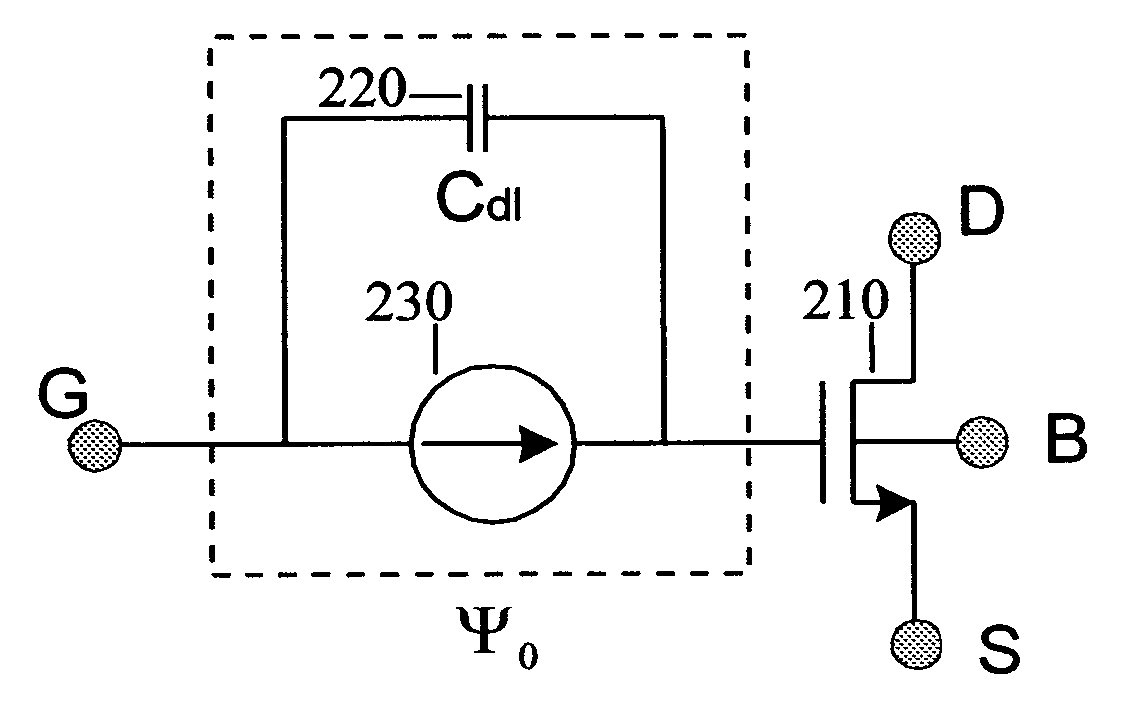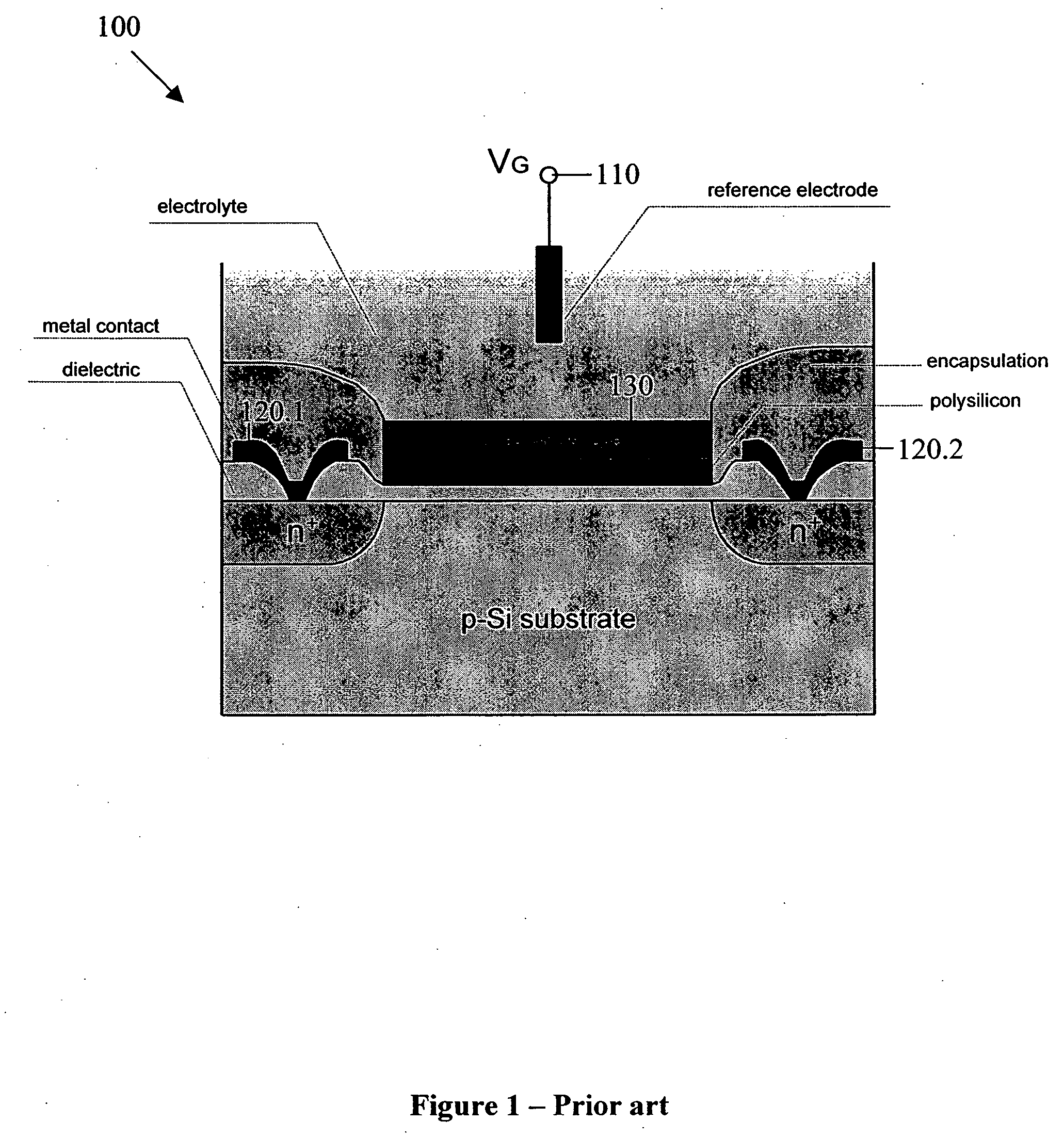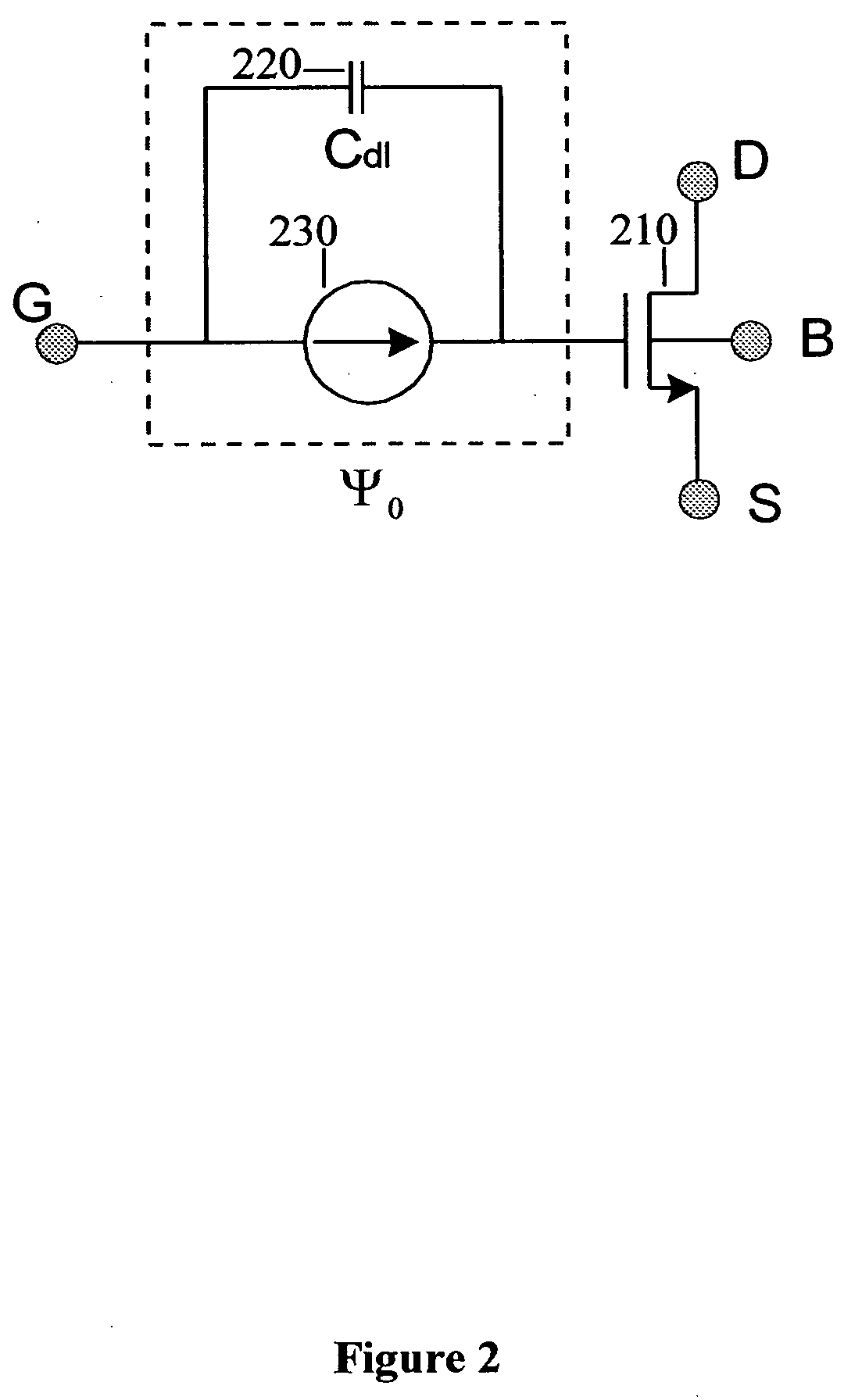Ion concentration sensor
a sensor and concentration technology, applied in the field of ion concentration sensors, can solve the problems of inapplicability, performance, noise limit, etc., and inapplicability to monolithic microsystems with limited chip area, and the source-drain follower readout circuit is therefore not suitable for monolithic microsystems
- Summary
- Abstract
- Description
- Claims
- Application Information
AI Technical Summary
Benefits of technology
Problems solved by technology
Method used
Image
Examples
examples
[0205] The performance of ion concentration sensor presented above was verified by simulations, and by measurements of a test chip. FIG. 26 presents simulation results of the transient response of an ISFET in pass-transistor mode to a 400 mVp-p sinusoidal input. The sinusoidal signal is applied to the ISFET gate at a frequency of 1 KHz, and is sampled by square pulses at 100 KHz applied to the diffusion input The output waveform shows that after the immediate sampling and VT drop, there is a slow drift of the signal while the sampling pulse is high. The signal drift is caused by the fact that after the transistor stops conducting there is still a low leakage current, known as the subthreshold current, which continues to charge the output node. The subthreshold current is very low, and its contribution to each sample value is similar, due to the similar period of the pulse. Increasing the operating frequency may reduce the effect of subthreshold current on the measurement.
[0206]FIGS...
PUM
| Property | Measurement | Unit |
|---|---|---|
| frequency | aaaaa | aaaaa |
| frequency | aaaaa | aaaaa |
| pixel size | aaaaa | aaaaa |
Abstract
Description
Claims
Application Information
 Login to View More
Login to View More - R&D
- Intellectual Property
- Life Sciences
- Materials
- Tech Scout
- Unparalleled Data Quality
- Higher Quality Content
- 60% Fewer Hallucinations
Browse by: Latest US Patents, China's latest patents, Technical Efficacy Thesaurus, Application Domain, Technology Topic, Popular Technical Reports.
© 2025 PatSnap. All rights reserved.Legal|Privacy policy|Modern Slavery Act Transparency Statement|Sitemap|About US| Contact US: help@patsnap.com



